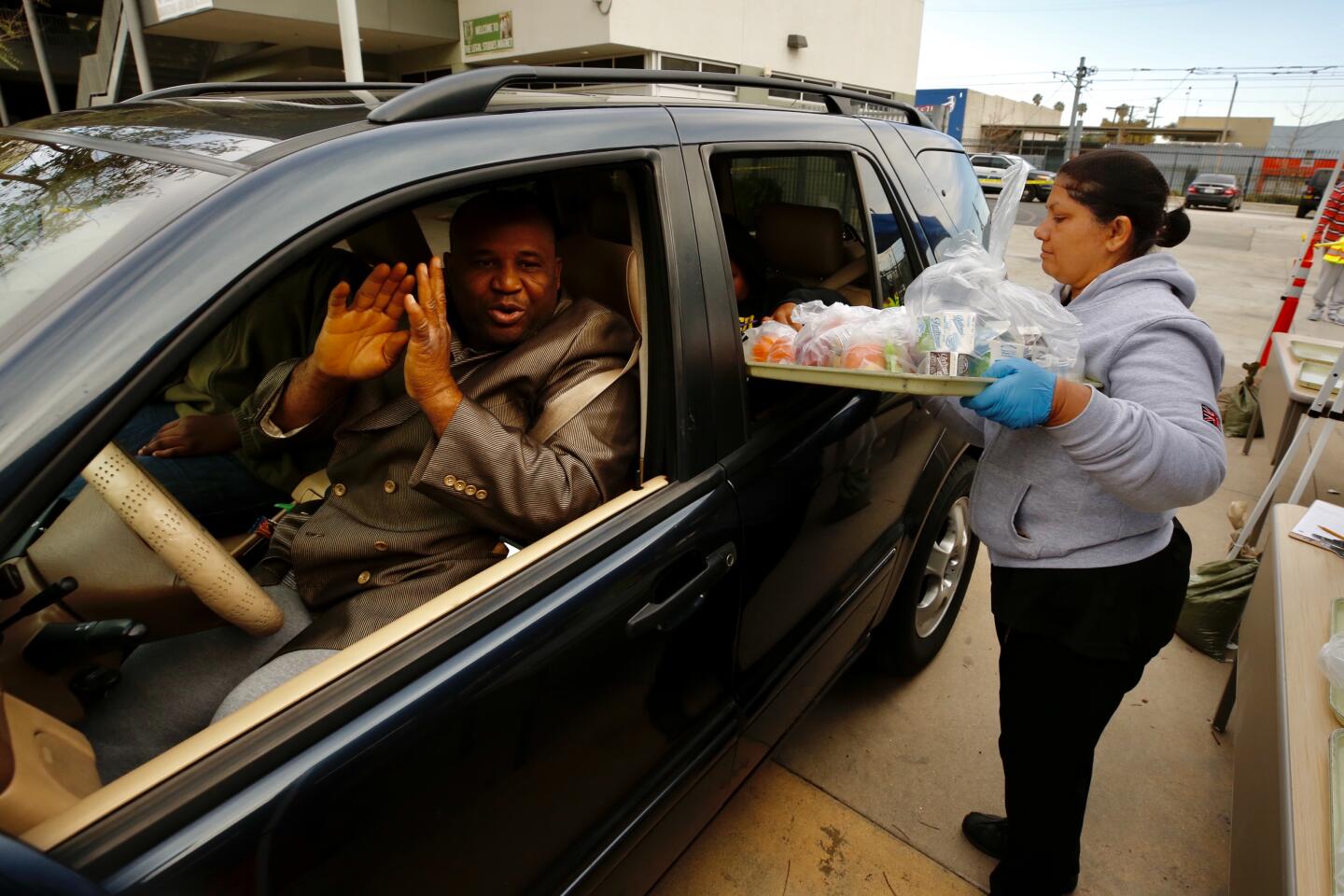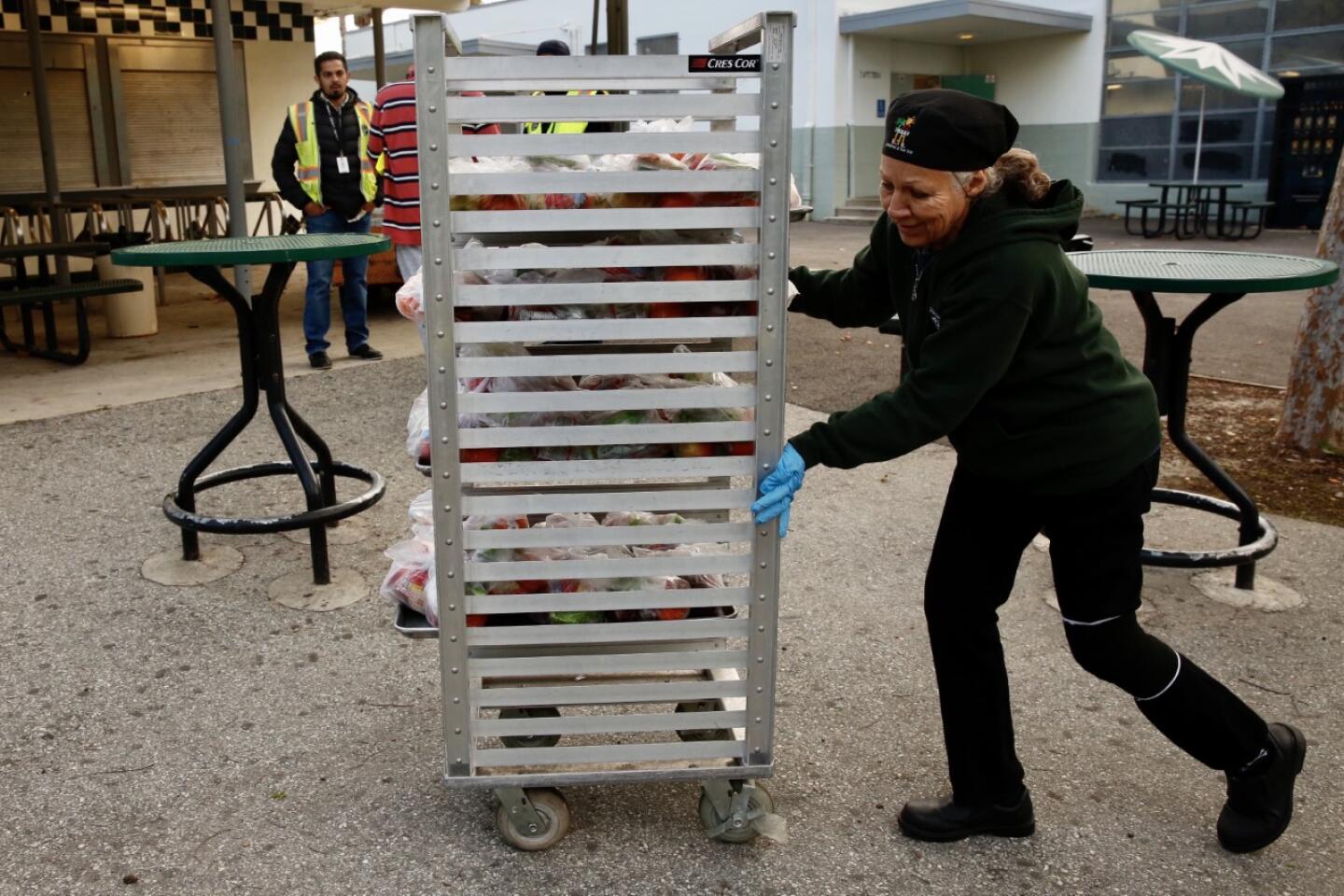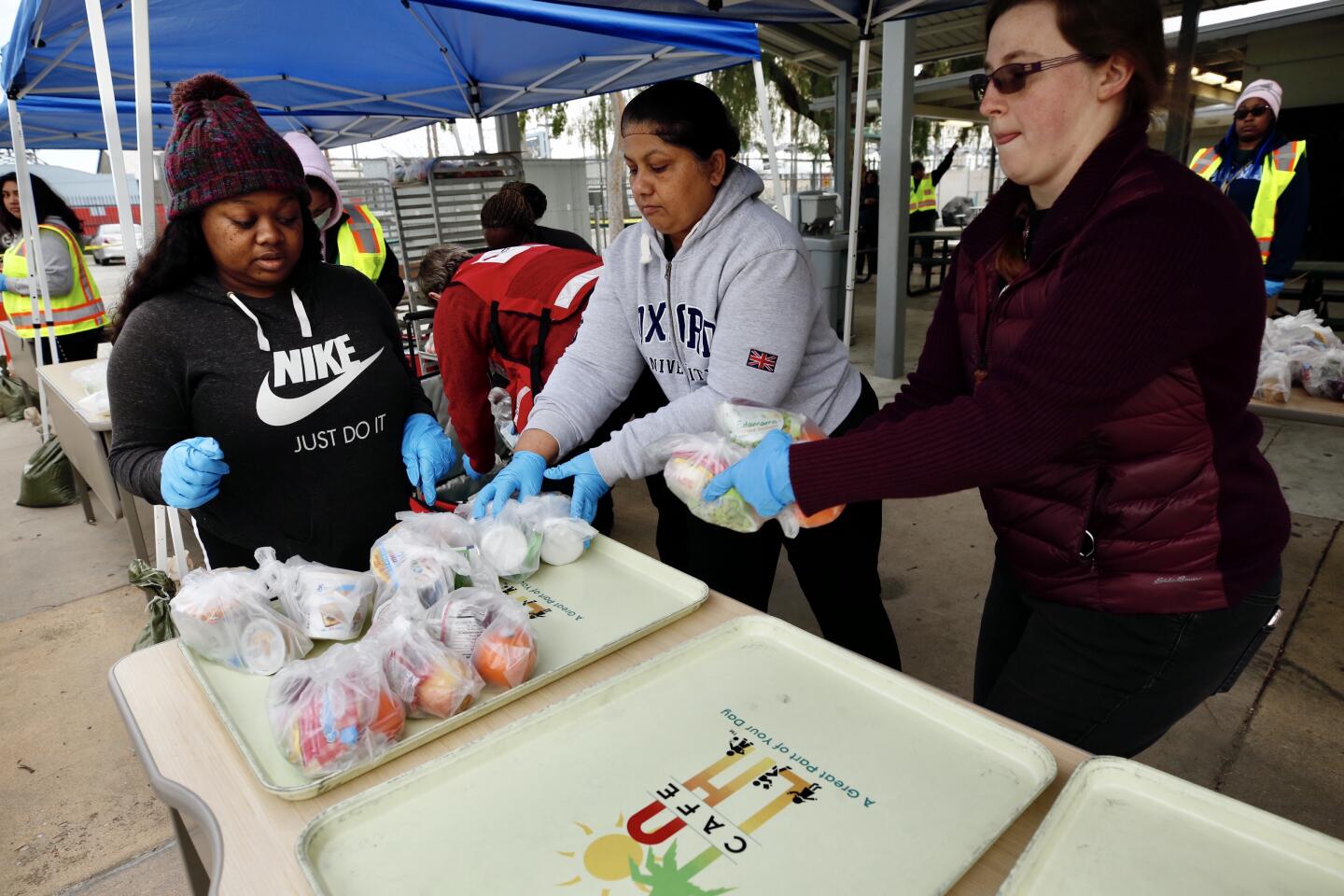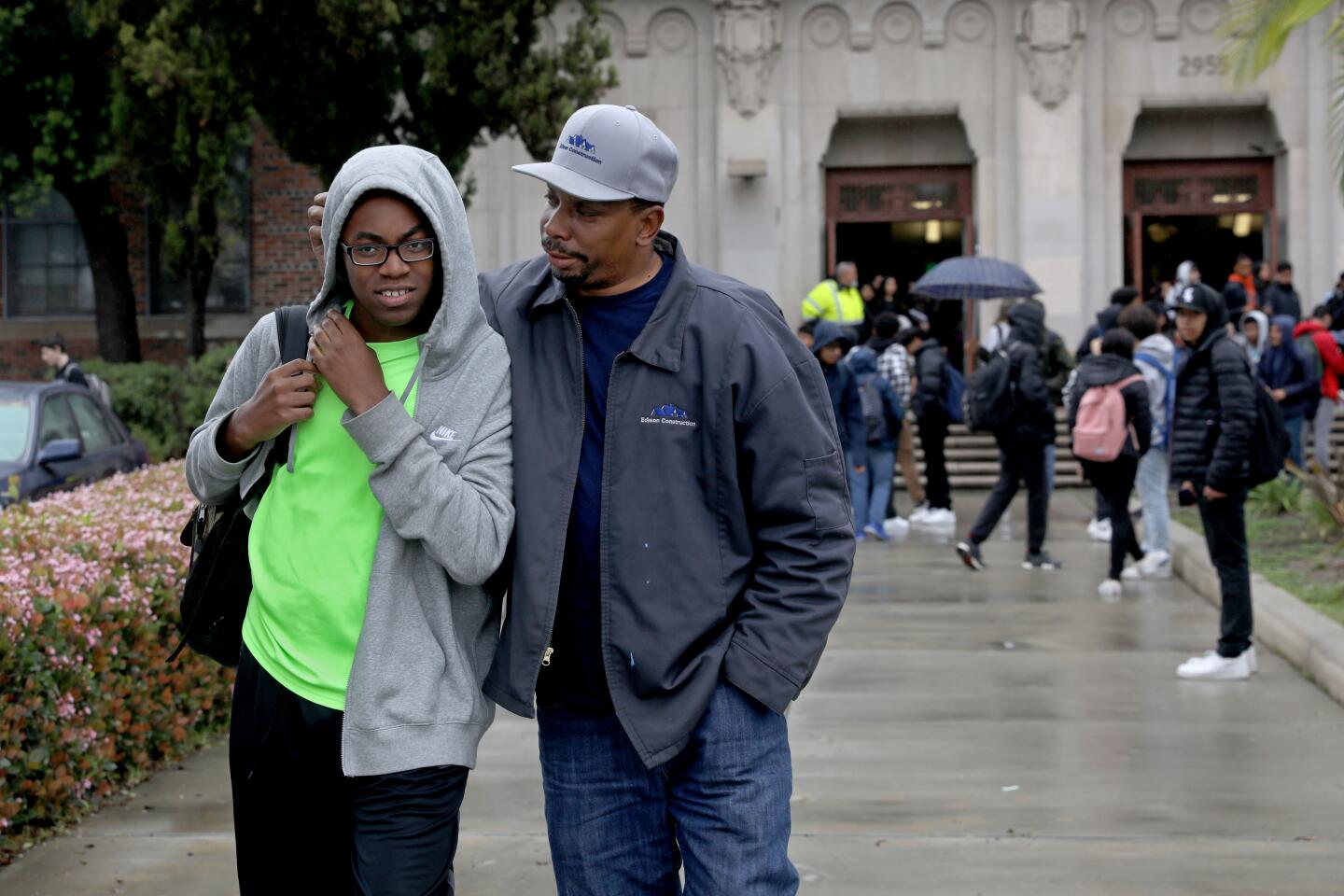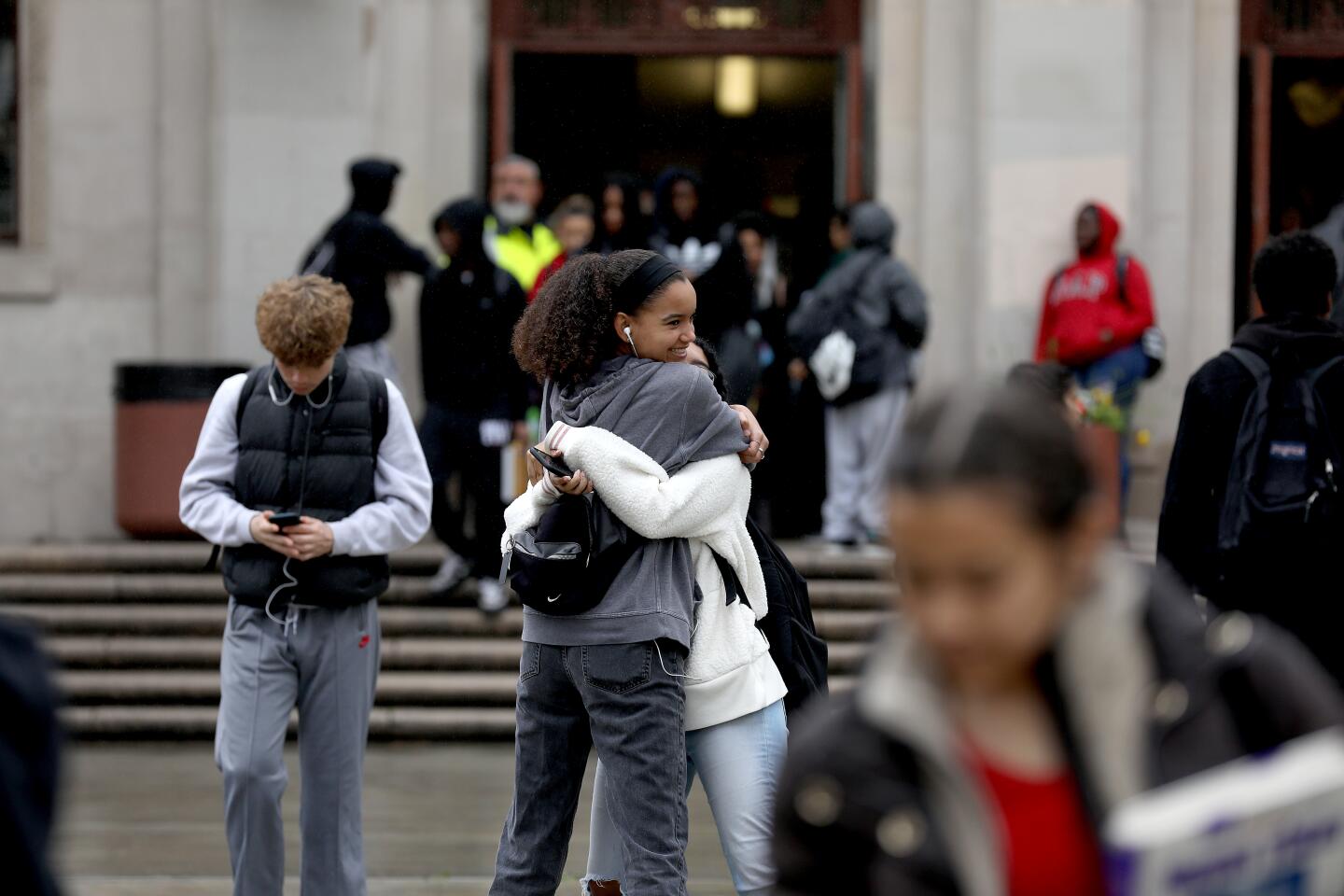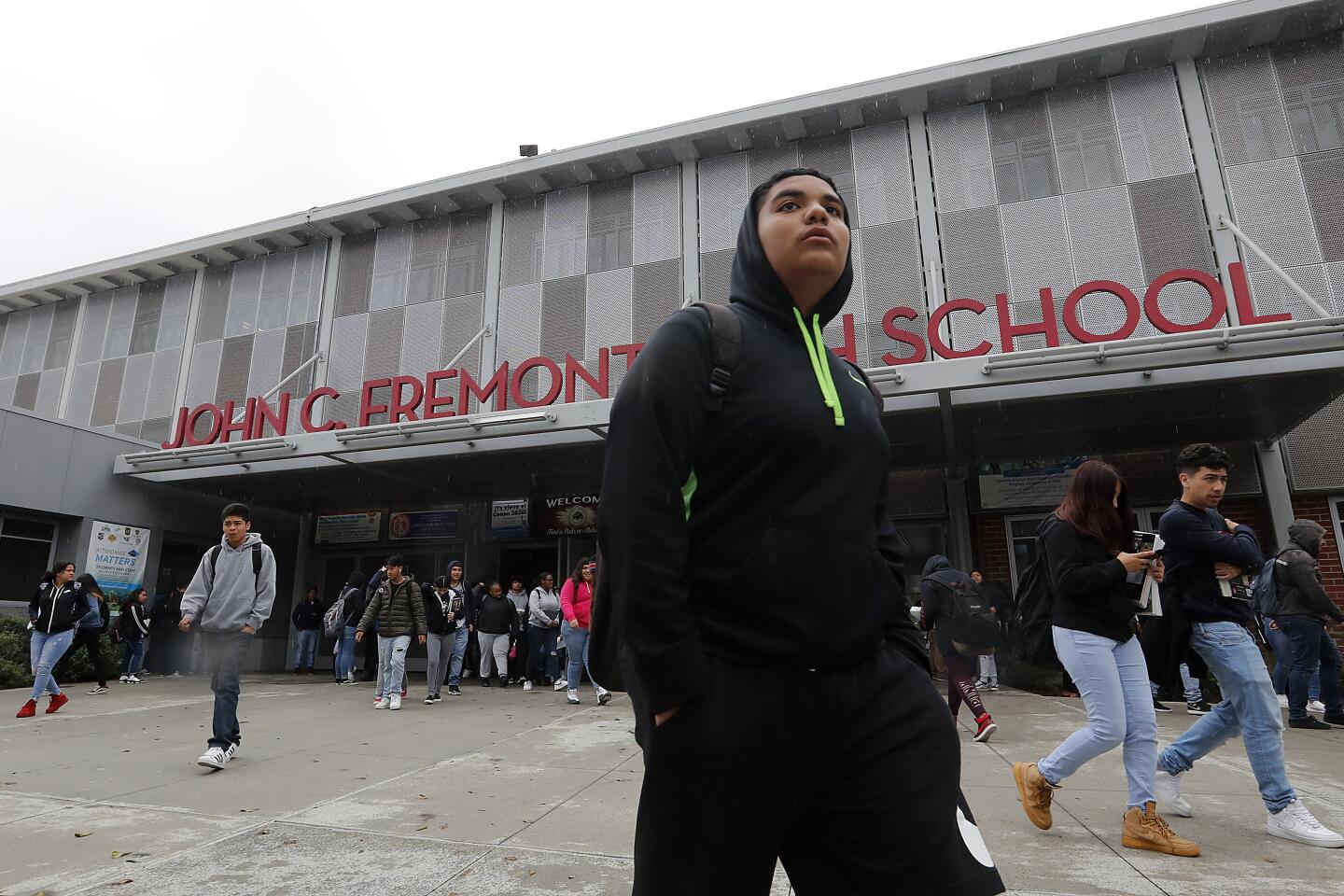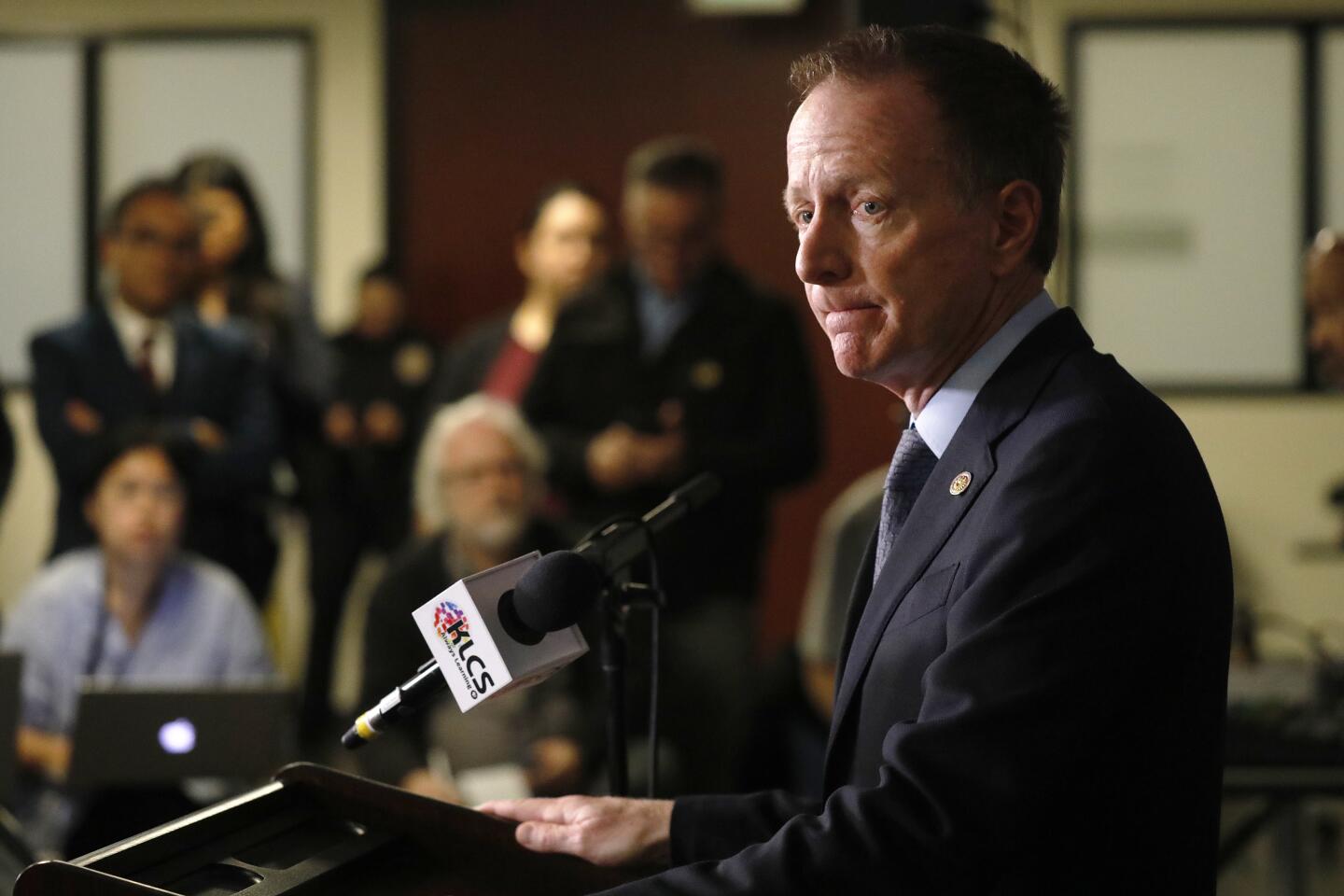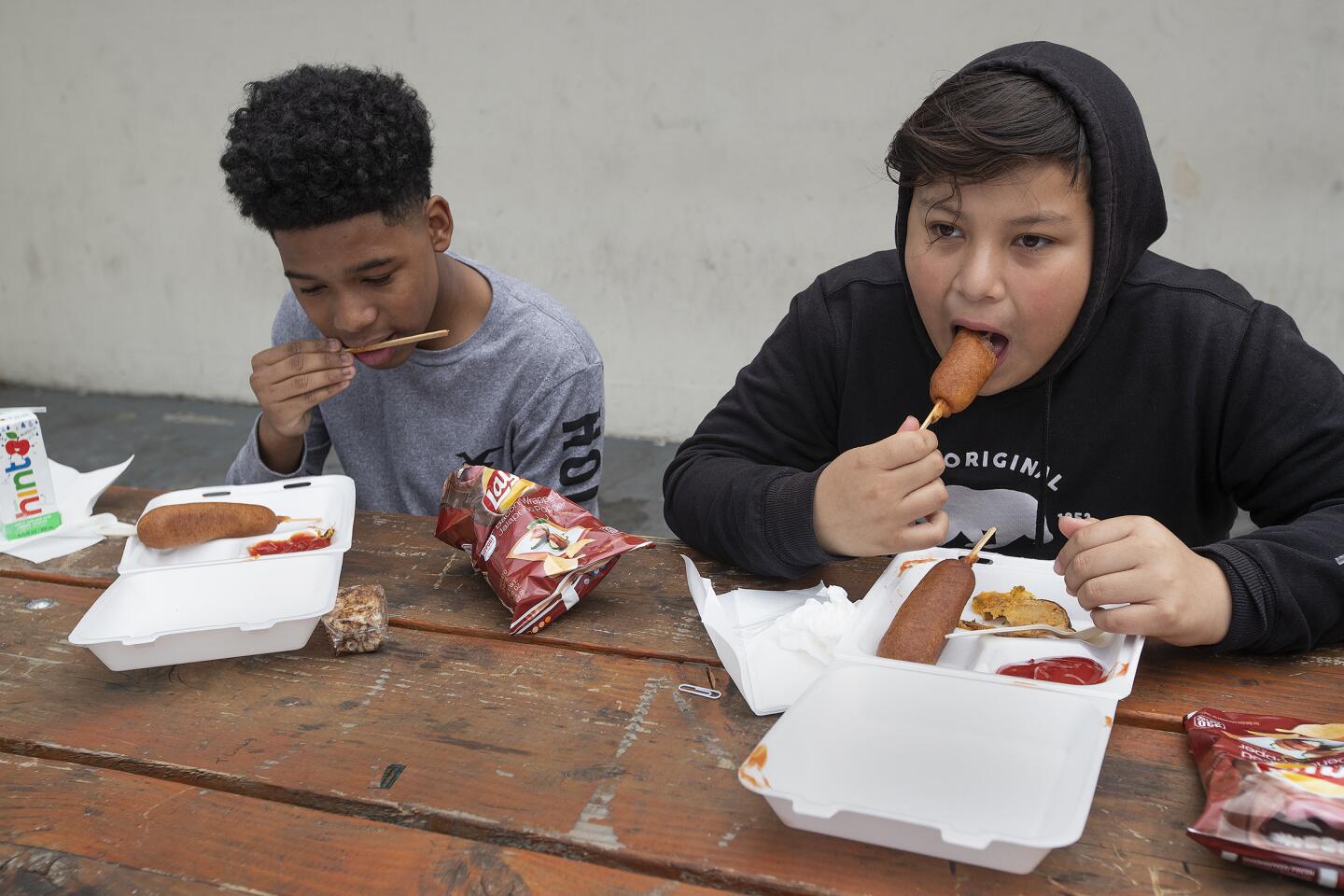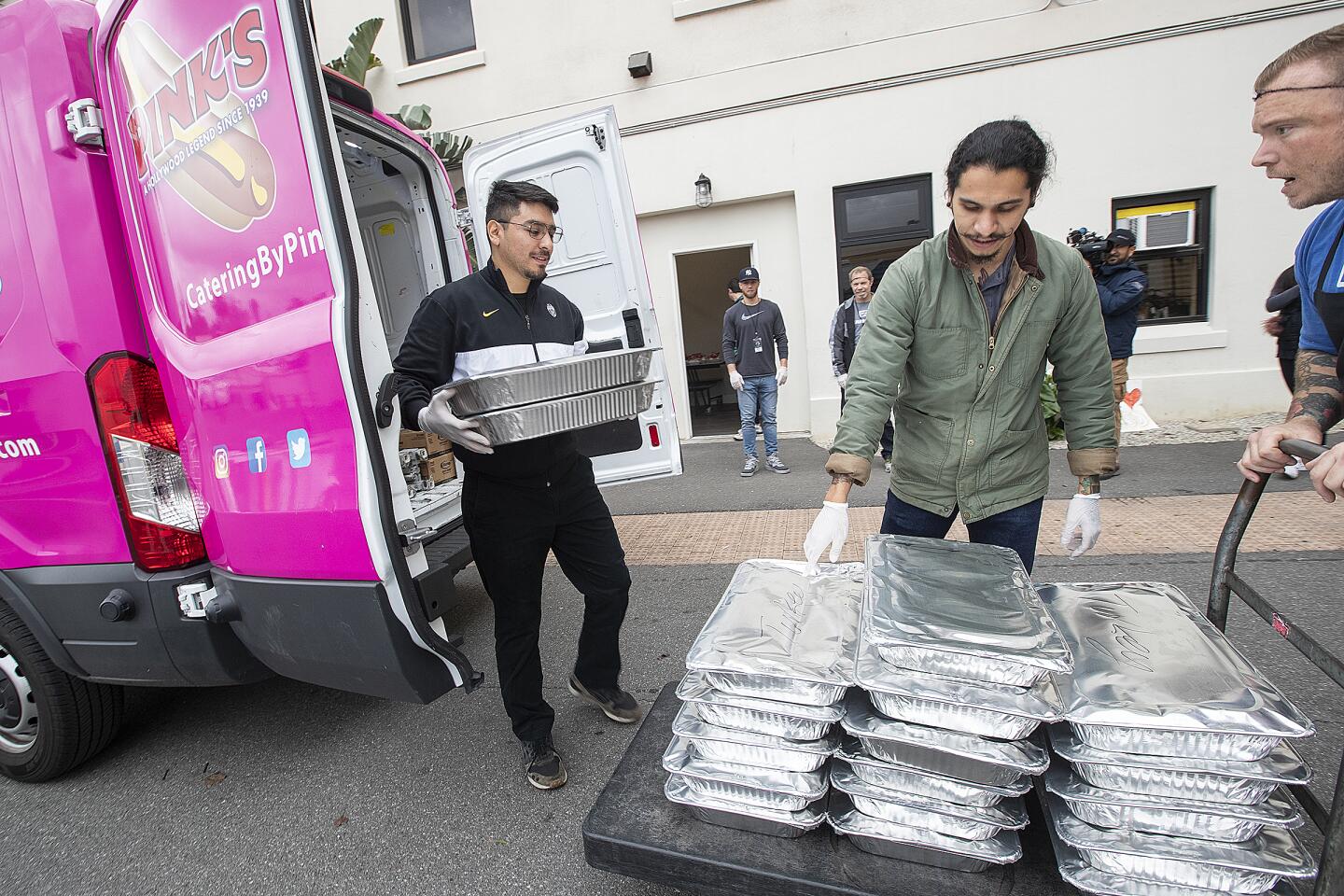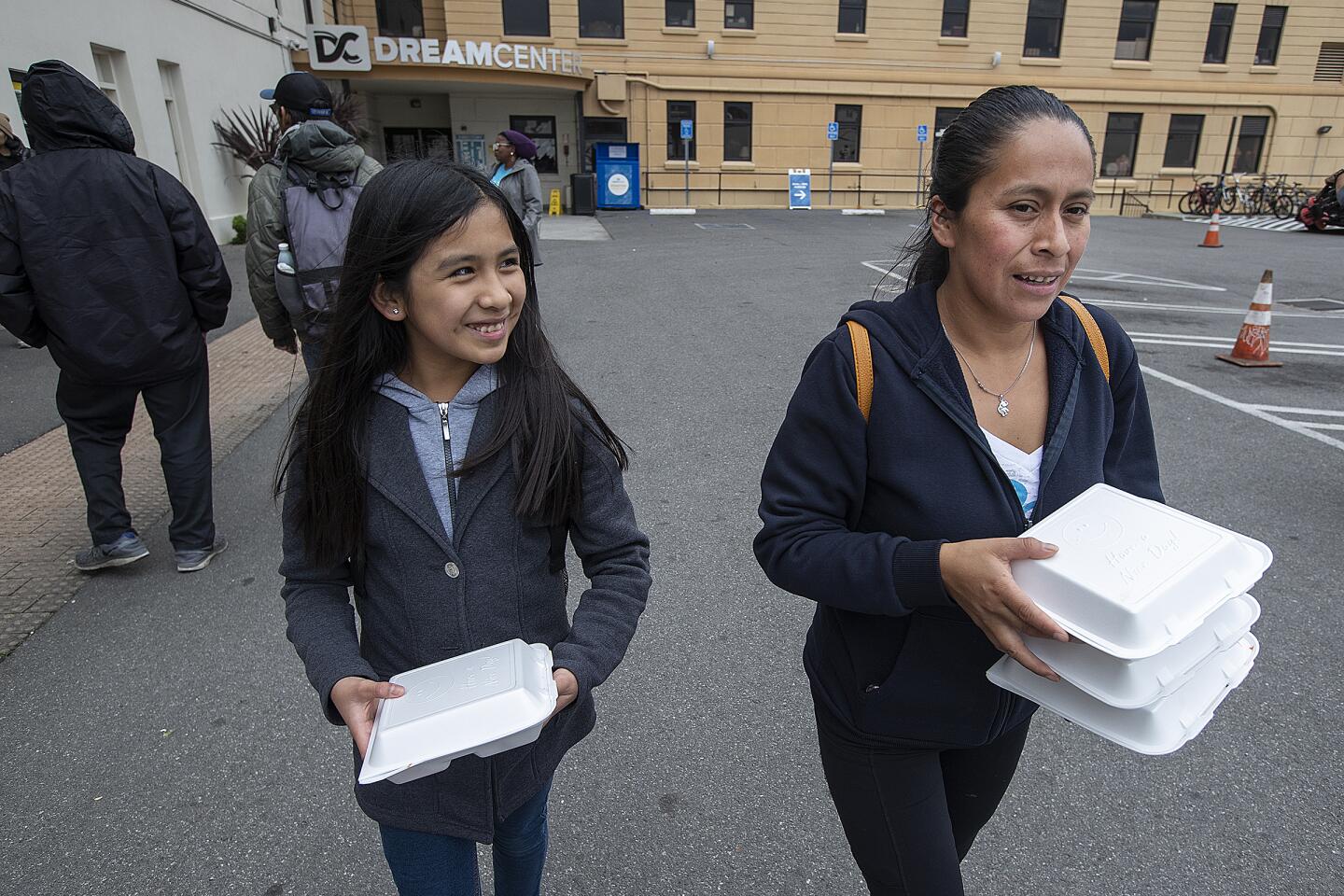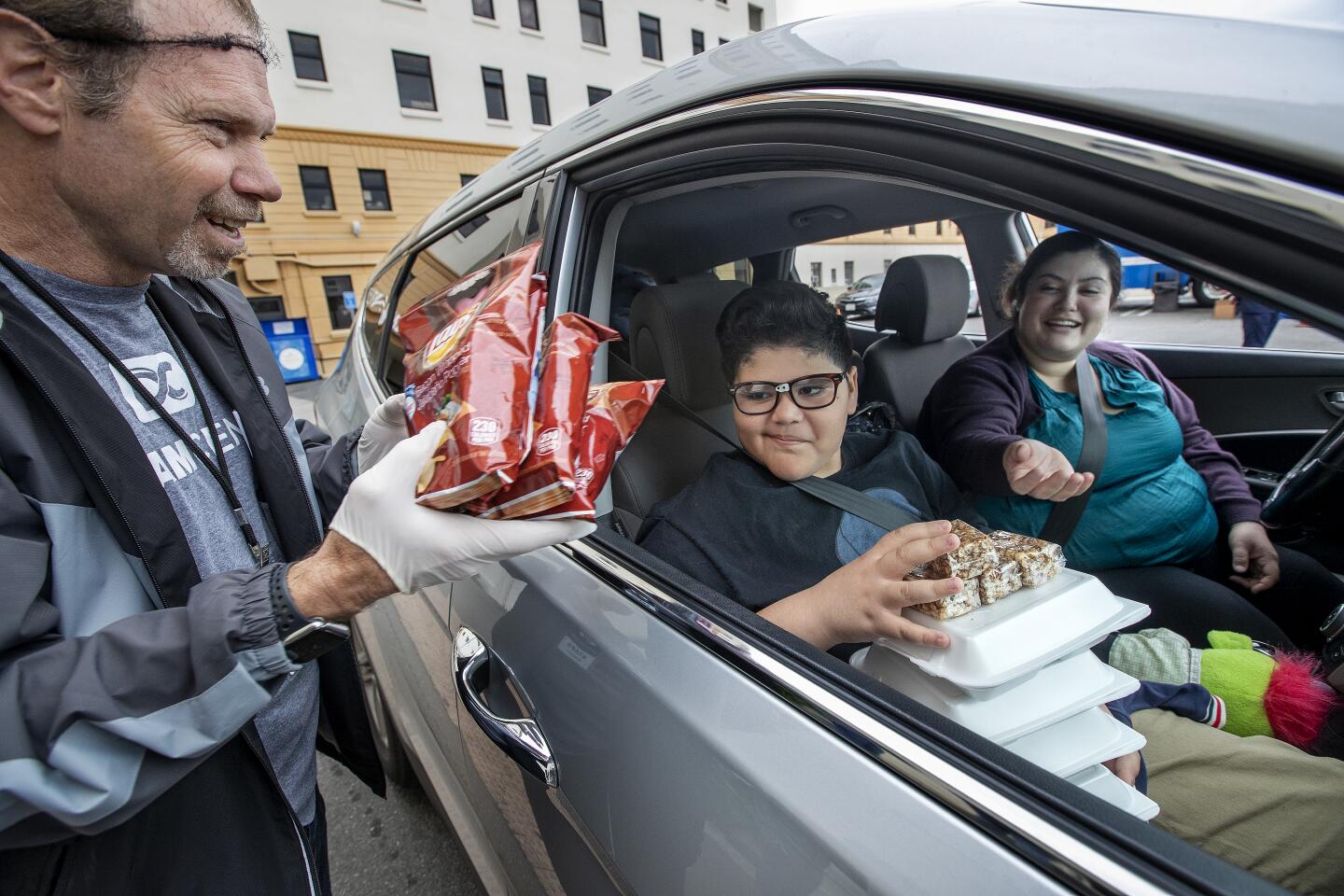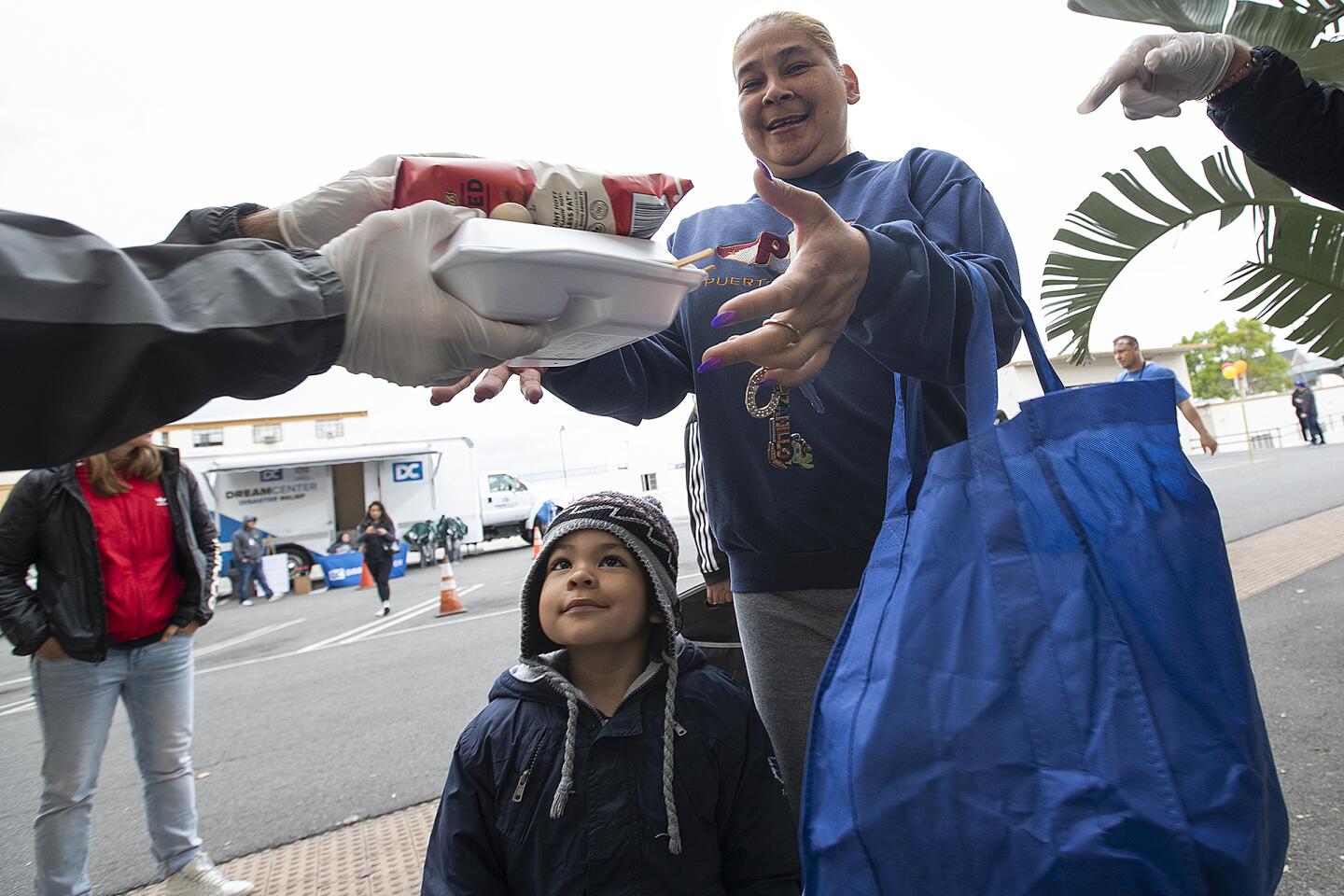LAUSD packs 400,000 meals, prepares for months of ‘grab-and-go.’ Recipients express relief
- Share via
One man wore plastic gloves and a face mask as he pulled up in a pickup to receive school-packed meals for his children. A woman with a preschooler at her side took her boxed meals through her car window and quickly drove away. Another woman said she was grateful to hear that the district was giving out milk. She couldn’t find any the last time she went to a local market.
As students and parents woke up to news that public schools in California might be closed for the remainder of the school year, Los Angeles school officials opened campus gates to what they said would be the first of many morning food pickups in the weeks and possibly months ahead.
Los Angeles Unified, the nation’s second-largest school district, has been training volunteers and ramping up food services to care for more than half a million students, and even their families, affected by the closures. About 80% of its students are from low-income families and qualify to receive breakfast, lunch and sometimes dinner from school.
About 400,000 “grab-and-go” meals were prepped and ready to be distributed Wednesday between 7 and 10 a.m. at 60 pickup sites throughout the district. The locations are set up for drive-through and walk-up distribution. Officials say they will make adjustments in the coming days based on how many people show up and where.
Riley Frank has 17 children and grandchildren and four great-grandchildren. Six of his grandchildren came to his home Tuesday. He wished he’d had more food to offer them, he said, but he’s had trouble buying staples at local markets because of the panic buying.
Frank, who usually only shops for a week’s worth of meals, was overwhelmed with emotion when he heard the school district was providing food. “They really were saying they’re not going to turn away nobody,” he said.
Frank, who is 70, was also relieved he didn’t have to stand in line at the Dorsey High School distribution site.
“My legs won’t let me do it. I’m just too old.”
For now, he’s focusing on the positives of having so much family at home.
“I think it’s a beautiful thing, because you can kinda like touch bases,” he said. “It’s going to be a good thing.”
At Dorsey High in southwest L.A., volunteers, including a Red Cross contingent, were at work before 6 a.m. setting up tents and tables and handing out plastic disposable gloves and hairnets. A police officer patrolled a gate by the entrance, and yellow tape marked a pathway winding through campus to the distribution area.
Volunteers stood ready to greet and usher visitors, while cafeteria workers inside assembled and packed cold meals into translucent white plastic bags. A typical breakfast consisted of an individual-portion-sized box of cereal, unsweetened apple sauce, milk and an apple, orange or banana.
For lunch, they provided bags filled with food such as a turkey and cheese sandwich, sunflower butter, mango juice, carrots, raisins, milk and another piece of fruit.
Food pickup was intermittent at first, mostly by car as people drove up to volunteers, who held out bagged meals on a tray — providing some precautionary distance between workers and visitors.
L.A. schools Supt. Austin Beutner said no one would be turned away, whether or not they have a connection to the school system.
“Our intent is to serve children, but if adults ask, we will offer, and we’re going to serve those in need,” Beutner said. “These are not ordinary days. ... Our goal is to help as many as we can.”
Gov. Gavin Newsom has pledged to continue to fund schools at normal levels throughout the closure, which allows employees to continue to be paid.
That continuing paycheck is reassuring to Rosa Garcia, cafeteria manager at Liechty Middle School, near downtown Los Angeles, another school-food distribution site that opened Wednesday.
She has three children at home who are 2, 5 and 8. The 2-year-old has asthma and could be susceptible to a respiratory infection, but Garcia wanted to volunteer — both to keep busy and for the $100 per day stipend. Her husband is a baggage handler at Los Angeles International Airport for China Airlines. His pay is sharply lower because his workdays and the number of hours he works in a shift have been cut.
Her 19-year-old daughter is helping tutor the children — because her classes at East L.A. College have shut down. The children’s school, State Street Elementary, provided computers to use for online instruction.
“They sent a little laptop home with instructions about how to log in so the teacher can see the amount of time that the student is working,” Garcia said.
Only 169 meals had been picked up with only half an hour to go at Dorsey. Officials believed that many families were just learning about the sites and were adjusting to the new realities of school closures.
But as volunteers started walking around the neighborhood, more and more people got the message that their kids did not have to go hungry.
Jacob Zuniga, the cafeteria manager at Dorsey, walked into a nearby furniture store and watched as an employee started making phone calls. Soon people from the store and the community were picking up meals.
Less than 30 minutes later, volunteers had given out 332 more meals.
“It’s a very humbling experience,” Zuniga said, “seeing all these families receiving food.”
More to Read
Sign up for Essential California
The most important California stories and recommendations in your inbox every morning.
You may occasionally receive promotional content from the Los Angeles Times.
